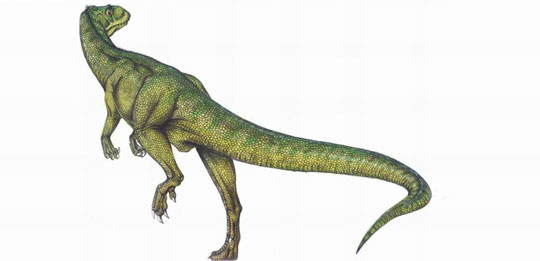
The Ilokelesia comes under the abelisaur category discovered in the year of 1991, the Ilokelesia's fragments were first recovered from the Río Limay Formation by the Neuquén Group found in the Plaza Huincul in the state of Neuquén belonging to Argentina, the remains of the skull, axial and also appendicular skeleton is known to be explained by the Coria et al in the year of 1998.
The name has its origin from the Mapuche language were the word ilo means flesh and the word kelesio means lizard, their specific name is derieved from the place the fossils were taken from known to be the Aguada Grande.
Ilokelesia is a theropod which is of moderate size known for its skull characteristics especially the quadrate and also the postorbital bones, the vertebra is known for its unique traits making it different from all other species of abelisaurs having processes which are lowered in nature on cervical vertebrae and dorsal vertebrae which does not have pleurocoels known to be the air pockets.
The type species known to be the aguadagrandensis comes under the classification of abelisaur's were known to be similar in many aspects described to have an enlargement in the postorbital bone mainly in the region raised from the orbit and also there is a flange known to be the external and internal ridge for support purpose arising from the same bone in the inner part of the orbit also these traits are similar to that of the Abelisauridae and Noasauridae, the animal inherits most of the properties of Abelisauria like having holes in the quadrate bone and also containing a postorbital which is T-shaped another cladistic analysis has categorized them to come under the Abelisauridae thus proving it to be brachyrostran carnotaurine.
| Ilokelesia facts: | ||||||||
|
||||||||